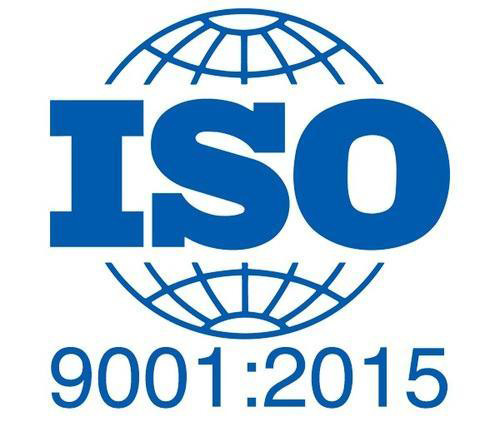How to Permanently Delete Files from Computer Hard Drives in Windows 10 11?
Before closing this guide, let me know which method you prefer and why. Comment below, and let’s discuss the best way to remove files on Windows 10 and Windows 11. Delete files, folders, or entire drives with the click of a button. CCleaner has a Drive Wiper tool that scribbles random data over the space a deleted file was occupying.
Permanently deleting files on Windows 11 is a straightforward process that anyone can master with just a little practice. By following the steps outlined above, you can ensure that your files are deleted for good, freeing up space and keeping your data secure. After completing these steps, your file will be permanently deleted and it won’t go to the Recycle Bin. You won’t be able to recover it unless you use specialized software, so be absolutely sure before you do this. Deleting everything on Windows 11 is like hitting the reset button on your computer.
- Yes, using the built-in reset option is safe and designed to securely delete your files without harming your system.
- Whether you’re solving a tricky problem or simply starting fresh, these steps offer a clean slate with a few clicks.
- Backing up your data is crucial because once you delete everything, you can’t recover it.
- Learn how to split cells in Excel using Text to Columns, formulas, Flash Fill, Power Query, and VBA.
Selecting multiple files can save time, especially if you have several files to delete. If you need to delete multiple files, hold down the Ctrl key while clicking each file. File Explorer is where you can browse all the files and folders on your computer. There are plenty of third-party tools to make the process of wiping your drive that much simpler, but some will charge for their services. Some PC brands even come with their own disk-wiping utilities. On the other hand, if the whole wiping process seems daunting, or you lack the Windows disks to clear your main drive, how to buy everdome why not take your machine to a PC repair store?
2. How to delete files using File Explorer in Windows 11
Type “select disk number” to highlight your target disk. Empty the Trash/Recycle Bin by right-clicking on it and choosing Empty Recycle Bin or Empty Trash. And while you’re in a cleaning mood, you can give your PC a physical clean to make sure no dust, lint, or debris clogs up your kraken vs coinbase vs binance ports. M.2 drives and other SSDs are smaller and usually faster than HDDs. Safeguard any data of your computer with professional software. Comprehensive data protection and cloning software for Windows PC.
How to Permanently Delete Files
Use “Erase Sectors” feature of DiskGenius to wipe hard drive. Install and start DiskGenius Free Edition on your computer. Right-click the drive whose free space should be erased and choose “Erase Free Space”. Yes, deleting unnecessary files can free up space and improve system performance. The reset process can take anywhere from 30 minutes to a few hours, depending how to set up an electrum bitcoin wallet on your system’s speed and the amount of data being deleted. No, this process will only delete your personal files and settings.
The last step of file recovery is outputting files to another drive. Matthew Burleigh has been writing tech tutorials since 2008. His writing has appeared on dozens of different websites and been read over 50 million times. This method is particularly intuitive and visually confirms that the file is being deleted. Dragging and dropping is often used by users who prefer a more tactile approach to managing their files. It’s a convenient option when you prefer using keyboard shortcuts to manage files.
- If the file can be previewed correctly like the picture below, the files is not corrupted and can be recovered correctly in the end.
- Deleting files from the Recycle Bin permanently deletes them from Windows’ active memory, but the files can still be recovered with dedicated file-recovery software.
- An SSD (solid state drive) removes files completely the first time you delete them.
- However, deleted files are recoverable as long as they are not overwritten.
How to Fix Corrupted Files on Windows Using SFC And DISM
Press the Delete key on your keyboard, or right-click on the file and choose “Delete” from the context menu. In the window that pops up, you’ll see all your hard drives, including any external ones currently connected. Try AVG TuneUp for PC to remove files and free up space.
First, get to the files you want to delete and select them. Then, depending on what version of Windows you use, follow the steps for Windows 10 or Windows 11, illustrated below. Confirm that the files are permanently removed.After emptying the Recycle Bin, the files are gone for good. Double-check the folder where the files were located to ensure they have been deleted. Yes, reputable file shredding tools are safe and effective for permanently deleting files, especially sensitive information. This action sends the file to the Recycle Bin, but it’s not permanently deleted yet.
The removal of data needs the help of disk eraser such as DiskGenius. Deleted files are not truly deleted and does not go forever if the drive is hard drive not an SSD and you haven’t written anything to the drive. Deleted files are not visible and accessible, and yet they can be found and recognized by data recovery software. So, if you want to make files unrecoverable, carry out an extra step to wipe hard disk. The best way to permanently delete files on Windows 10 is to overwrite the files and data using third-party software tools. Learning how to delete files on Windows 11 is a fundamental skill that helps keep your system organized and running smoothly.
Step 6: Select ‘Remove Everything’
We’ll walk you through each step, ensuring you know exactly what to do. If you delete the wrong file permanently, you will need specialized software to attempt recovery, but there’s no guarantee. This is a safety measure to ensure you really want to get rid of the file. This step involves double-clicking on folders to drill down to the exact file you need to delete. Make sure you’re in the right folder to avoid unwanted deletions. Choosing “Remove everything” will erase all personal files, apps, and settings—completely wiping your device clean.
It’s an essential step because it gives you access to actions like renaming, copying, and, of course, deleting the file. Yes, permanently deleting a file will free up space on your hard drive immediately. File Explorer is your gateway to all the files and folders on your computer. You can navigate through your drives to find the specific file you want to delete. Tools like CCleaner or Eraser overwrite the file’s data, making it virtually impossible to recover even with advanced recovery software.
Use secure file shredder software
SSDs use non-mechanical flash memory, which reads a file all at once for near-instant deployment. If you delete a file from an SSD, it’s erased completely to make room for a new file. The SSD approach is faster but makes data more vulnerable — most SSDs require a password to access storage. After completing these actions, the files you selected will either be moved to the Recycle Bin or permanently deleted, depending on your chosen method. You can also use File Explorer’s top menu or ribbon to delete files on your Windows computer.
Once you’ve completed these steps, the files you selected will be removed from your computer. They will first go to the Recycle Bin, and after you empty it, they will be permanently deleted. Remember to be cautious when deleting files permanently.
This method is also dynamic, which means it updates as your data changes. You can provide this address when you want shipments or mail or when other organizations like a gym, health clinic or local sign-up sheet ask. Start this habit when you implement any address protection measures. Virtual mailbox services are common for some businesses, frequent travelers and those highly protective of their address.
In this guide, we will show you how to use built-in features, conditional formatting, formulas, and Power Query to identify and remove duplicates. Each method has its advantages depending on your goal and the size of your data. Deleting a wallet from your device is a significant action and should be done with utmost care.


